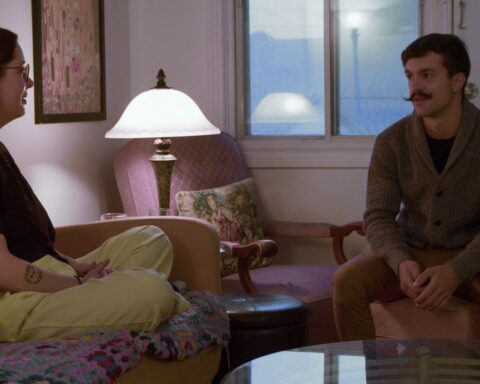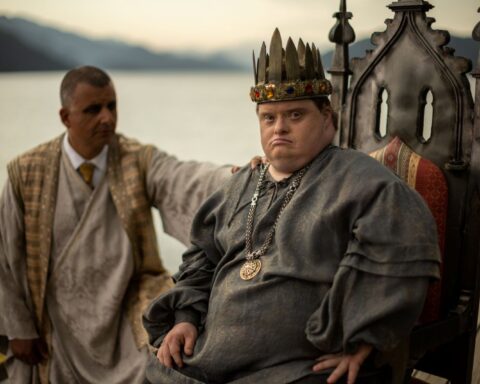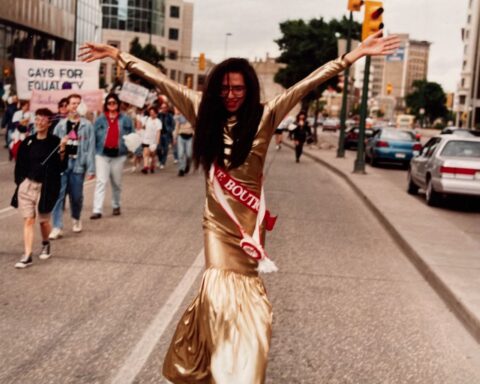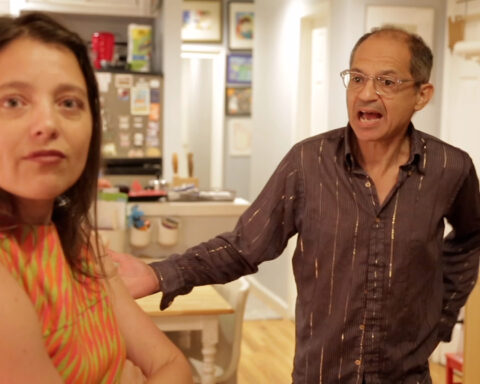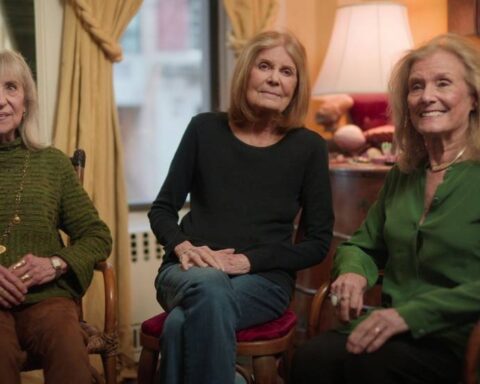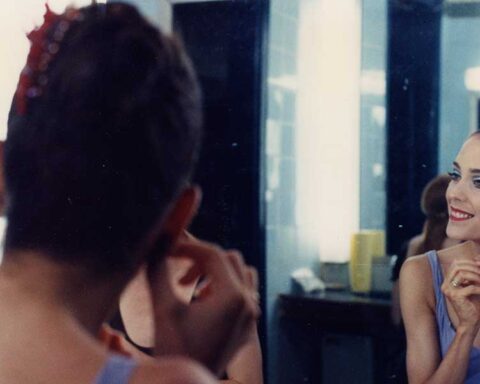DOC’s Executive Director is fully committed to Indigenous film production in Canada and abroad. She worked closely with Indigenous filmmakers at the National Film Board of Canada, where she worked from 2006 through 2019, finishing off as the Executive Director of English programming at the NFB. Here’s her personal list of superb NFB Indigenous productions. — Marc Glassman, editor POV.
For Indigenous history month last June, I posted a title every day from the NFB’s rich and under known collection of films by Indigenous directors. COVID quarantine seems like a good time to bring back that list:
1. The Ballad of Crowfoot
(dir. Willie Dunn, 1968)
The first film made by an Indigenous director in Canada and Canada’s first music video.
2. You Are on Indian Land
(dir. Mike Kanentakeron Mitchell, 1969)
This film is as powerful and relevant now as it was when it was first released. The film travelled widely across North America helping to mobilize a new wave of Indigenous activism and was notably shown at the 1970 occupation of Alcatraz.
3. Christmas at Moose Factory
(dir. Alanis Obomsawin, 1971)
Alanis’ very first film was created with Cree children attending a residential school in Moose Factory, Ontario. It is made from drawings by the children and their stories as recorded by Alanis. For those who don’t know her work, Alanis is a living legend. Now completing her 53rd film, the impact of her work in Canada and around the world is beyond measure.
4. The Other Side of the Ledger: An Indian View of the Hudson’s Bay Company
(dirs. Willie Dunn and Martin DeFalco, 1972)
This smoldering indictment of the Hudson’s Bay Company was made to provide a different perspective on the 300th anniversary celebrations of the company whose fur trading empire drove colonization across much of what is now Canada. The film is narrated by George Manual, the legendary former president of the National Indian Brotherhood.
5. Finding Dawn
(dir. Christine Welsh, 2006)
This moving film tells the stories and honours the lives of some of Canada’s missing and murdered Indigenous women and girls. Thirteen years later, the MMIWG (Missing and Murdered Indigenous Women and Girls) national inquiry delivered its final report. One of their findings is that Indigenous women and girls made up almost 25% of all female homicide victims in this country between 2001 and 2015. Amazingly, when the report was released in June 2019, some people were questioning the use of the word genocide.
6. Mother of Many Children
(dir. Alanis Obomsawin, 1977)
Alanis’ gorgeous celebration of Indigenous womanhood traces the flow of life from birth to old age. Initially planned for International Women’s Year in 1975, the film was released two years later. Through the stories of different women, Alanis shows how Indigenous women have fought to regain equality, instilled cultural pride in their children and passed on their stories and language to new generations.
7. Hands of History
(dir. Loretta Todd, 1994)
Todd’s landmark documentary profiling four contemporary female Indigenous artists—Doreen Jensen, Rena Point Bolton, Jane Ash Poitras and Joane Cardinal-Schubert. Todd is an amazing filmmaker and this documentary is a beautiful testimony to the role of art in the transmission of culture.
8. Minqon Minqon: Wosqotomn Elsonwagon (Shirley Bear: Reclaiming the Balance of Power)
(dir. Catherine Martin, 1990)
Martin directed this striking portrait of Maliseet artist and activist Shirley Bear as part of Studio D’s groundbreaking short film initiative Five Feminist Minutes.
9. Lake
(dir. Alexandra Lazarowich, 2019)
Shot on 16mm with an all-women, all-indigenous crew, Lake follows Jamie Linington and Maureen Caudron-Bell as they venture out onto the vast frozen surface of Lesser Slave Lake in Alberta to go net fishing, something their families have done for generations. Part of Five Feminist Minutes 2019, Lake was loosely inspired by Minqon Minqon: Wosqotomn Elsonwagon. “Indigenous labour is never just work,” says Lazarowich. “It’s cultural practice, our Indigenous knowledge. It’s how we are in the world.”
10. Deep Inside Clint Star
(dir. Clint Alberta, 1998)
A breathtakingly honest work of cinema about sexuality, identity and finding one’s place in the world. It made a huge sensation when it premiered at the Sundance Film Festival. Clint left this world far too young. I don’t think I will ever forget his film.
11. I Like Girls
(dir. Diane Obomsawin, 2016)
This glorious short animation about first loves travelled widely on the festival circuit and qualified for the Oscars.
12. Two Spirited
(dir. Sharon A. Desjarlais 2007)
This short doc on jingle dancer Rodney “Geeyo” Poucette is about prejudice and (re)claiming one’s place. Two Spirited was among the top-10 most viewed films on nfb.ca in 2018.
13. Natsik Hunting
(dir. Mosha Michael, 1974)
Shot and edited by Mosha Michael, this doc is believed to be Canada’s first film by an Inuk director. Natsik Hunting follows inmates from the Ikajurtauvik correctional facility taking part in a seal hunt. I love Michael’s intimate observational images and the awesome country-music influenced score that he co-performed with Inuk music legend Etulu Etidloie.
14. Amisk
(dir. Alanis Obomsawin, 1977)
One of my favourite films by Alanis Obomsawin. She organized and filmed a benefit concert to raise money for the James Bay Cree who were fighting the creation of a hydro-electric dam on their territory. Indigenous artists from across Turtle Island converged on Montreal for the concert at Place des Arts. Performances are intercut with interviews with Cree elders in James Bay. There are performances by Willie Dunn, Duke Redbird, Alanis herself and many others. The crew was primarily Indigenous including cinematographers Bob Charlie and Buckley Petawabano.
15. Patrick Ross
(dir. Ervin Chartrand, 2006)
A beautiful story about art and identity. (This was a request from my NFB Winnipeg colleague Leslie Stafford.)
16. Foster Child
(dir. Gil Cardinal, 1987)
This is a landmark film and remains one of the most powerful documentaries ever made in Canada. Gil was 35 when he made this film: a personal and multi-layered journey of his search for his biological family and discovery of his Métis roots.
17. Doctor, Lawyer, Indian Chief
(dir. Carol Geddes, 1987)
A powerful tribute to Indigenous womanhood.
18. Birth of a Family
(dir. Tasha Hubbard, 2017)
This award-winning feature doc tells the story of four siblings taken by child welfare authorities from their mom during the Sixties scoop, who as adults are coming together for the very first time. (POV review)
19. Three Thousand (dir. Asinnajaq, 2017)
This glorious weave of archival images, animation and a meticulously designed soundscape tells a story of Inuit past, present and future. Three Thousand won the Kent Monkman Best Experimental Prize at imagineNATIVE and has screened at festivals around the world including Berlin.
20. CBQM
(dir. Dennis Allen, 2009)
This film always makes me smile. Radio is a whole other—and sublimely beautiful—thing in small towns like Fort McPherson in the Northwest Territories.
21. Yuxweluptun: Man of Masks
(dir. Dana Claxton, 1998)
This is an insightful doc about the artist Lawrence Paul Yuxweluptun and his brilliant performance piece “An Indian Shooting the Indian Act.”
22. The Mountain of SGaana
(dir. Christopher Auchter, 2017)
.
This short animation piece is a gorgeous retelling of a Haida fable with a contemporary spin.
23. Totem: The Return of the G’psgolox Pole (dir. Gil Cardinal, 2003)
Gil’s film tells the story of the colossal efforts of the Haisla people from Kitamaat village on the BC coast to have a totem pole that was stolen from their lands in 1929 returned from a museum in Stockholm. The broadcast of Gil’s documentary on Swedish television helped galvanize Swedish citizens to the Haisla cause and put additional pressure on the museum and the government. The pole was finally returned to Kitamaat in 2006, marking the first time a totem pole had been repatriated from overseas by a First Nation. The return is documented in Gil’s follow-up film from 2007 Totem: Return and Renewal.
24. Nowhere Land
(dir. Bonnie Ammaaq, 2015)
This magnificent short is about Bonnie and her family’s experience of living out on the land and then being compelled by circumstances to settle in the hamlet of Igloolik, a place with noise and lights and over fifteen hundred people that still doesn’t feel completely like home. I was honoured to be in Igloolik for the first screening with Bonnie & family, producer Alicia Smith and the community. The next night it played to a sold-out crowd in Iqaluit, delaying the start of SpongeBob, SquarePants which only drew in a middling audience. Nowhere Land won best short documentary at imagineNATIVE in 2015 and then went on to screen at Berlin.
25. Incident at Restigouche
(dir. Alanis Obomsawin, 1984)
Alanis’ game-changing film documented two Quebec Provincial Police raids on the Mi’kmaq community of Restigouche to enforce arbitrary legislation that was being used to restrict their fishing rights. This film features Alanis’ legendary interview with then-provincial minister of fisheries Lucien Lessard, the man responsible for ordering the raids. Incident at Restigouche premiered at TIFF (then called the Festival of Festivals) in 1984 along with Patu!, a groundbreaking film by another Indigenous filmmaking legend, Merata Mita from New Zealand. (POV review)




